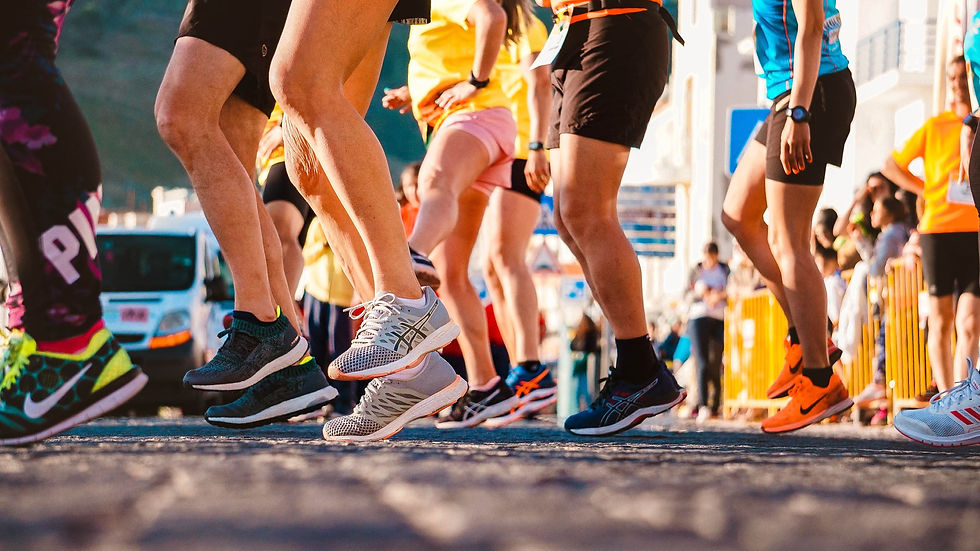What you need to know about minimalist running shoes
- Custom Podiatry Services
- Mar 5, 2021
- 3 min read
Updated: Jun 5, 2022
In the early 00’s minimalist running shoes saw a massive boom with major sporting brands such as Nike releasing the “Free” and probably the most famous of the era, Vibram, with their “FiveFingers" (Pictured below). These shoes were pitched to consumers to promote a more “natural” running gait, as well as some implying to strengthen the foot muscles and decrease the risk of injury. For Vibram, this ultimately led to a class action lawsuit which resulted in them having to refund millions of dollars after a settlement alleging their marketing promises were misleading.

So what makes a shoe “minimal?” The two factors are:
1. A low heel to toe drop
A shoe’s “drop” is the difference in height from where the forefoot, under your metatarsophalangeal joints sit, to under where your heel sits above the ground. Often minimal shoes have anywhere from a 0mm to a 4mm drop. This is in comparison to a more standard running shoe that more regularly is seen between an 8mm and 12mm drop.

2. A thin midsole (Stack height)
The midsole of a shoe is where we see most of the cushioning in a shoe. It is effectively the foam (or other material) that absorbs and rebounds you when you hit and leave the ground. It is arguably the most researched element of current running shoes and where many shoe companies will advertise where their “magic” comes from. In minimal shoes, as their name suggests, it is all about decreasing the amount of shoe intervention on the body, so this ultimately means “less shoe” and less midsole. Standard running shoes often see their midsole height well above 30mm at their highest point, such as the Asics Novablast that comes in at 40mm. Minimal running shoes often come in well under 25mm at times. Altra’s Vanish-R, their lowest profile road shoe, has a stack height of 14mm at their highest point.
So, despite some considerable differences in their design, and some over stretched marketing promises, are they better or worse?
When comparing running in different shoes (or indeed any environment), its important to note the forces cannot be removed or added, but merely shifted. So when we move from a standard running shoe into a minimal running shoe, what we see is increased loading distally in our legs and feet. There is more load on structures below our knee. However, we do see a reduction in the force applied to the structures from our knees and above.

How to use minimalistic shoes in your favor:
By knowing how these forces can be manipulated we can use minimal running shoes to help manage injuries and offload particularly knee pain or quad injuries.
In summary, minimal shoes are not better or worse or necessarily reduce or promote injury. They may, however, shift forces and increase the likeliness of injury lower in your legs, but also reduce the risk of injuries higher up your legs.
When picking a new shoe, having your movement and injury history thoroughly assessed by a podiatrist can help point you in the right direction.
If you are needing your running shoes updated or have a current injury speak to one of our Podiatrists today by calling 1300 002 257 or click here to book a consultation.
FIND US:
- Facebook: https://www.facebook.com/ CustomPodiatryServices
- Instagram: https://instagram.com/custompodiatry_/
- LinkedIN: https://www.linkedin.com/company/18627665
- Locations: http://bit.ly/2I4xNp8
Comments